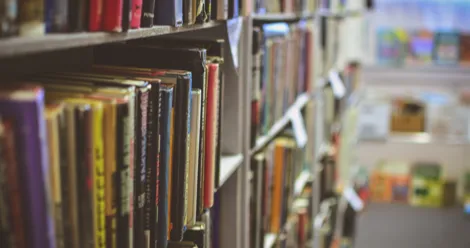
Libraries as Community Spaces: an Academic and a Personal Perspective
Public libraries are not just places where you can borrow books for free. Nor are they merely places where you can access the internet or use a printer. They offer those services, of course. But more than that, public libraries are community spaces; spaces designed to serve a local constituency and promote a sense of sociality. They offer classes, workshops, events, story times—plentiful opportunities for strangers to meet and social interactions to occur, as well as opportunities to learn and grow. (And for babies to learn how to properly shelve books; see below).
https://www.instagram.com/p/BmwUOteA6jx/?taken-by=shittyhousewife
This is one way of understanding libraries as a community space. It is perhaps the most common way, and in professional library discourse and popular media this is how the library as a community space is presented—as a kind of social hub or ‘third space’, one of those valuable and increasingly rare spaces that belong to the community where anyone can hang out for free. The books are a bonus.
There is another way of understanding libraries as a community space, however. This other way has a more academic bent to it, and draws on ideas from social history, sociology, and cultural research, and sees the library as one part of a wider form of liberal governmentality. Simply, the liberal governmentality refers to a governing authority shaping citizens so that they could be self-regulating individuals; you don’t need a government watching and telling people what to do if the people themselves knew what to do and would watch out for each other. There are various instruments and agencies that can be used for this kind of rule, organisations and people involved in this regulation of behaviour and conduct in everyday life. These include churches, lawyers, doctors, schools, and public leisure facilities like municipal swimming pools. And, of course, libraries. ‘Community’, seen through this lens, can be understood as something that a governing authority may try to use to develop social cohesiveness and a self-regulating group of citizens.
Through the liberal governmentality lens, the library can be understood as an instrument of the local municipality, particularly in its role in the community. The workshops, classes, and story times that are offered by libraries act as tools to guide and influence a population. These events allow for social interactions and potential relationships forming between neighbours, provide ways for the governing authority to connect with its constituency in a positive way, and contribute to the lifelong learning of the populace. The library is a way to gently guide a population and create a community of free, educated, self-regulating individuals.
These musings of the library as community space occupied my mind for the better part of four years as I completed my PhD. I entered libraries as a researcher, attended events and walked around the space with the critical eye of an academic. I questioned why things were the way they were, and blended what I was seeing and hearing with what I was reading in academic texts. Now it has been five years since completing the fieldwork component of my research, two years since I submitted the thesis, and one year since I graduated. I still go to the library a lot, and I will always look at a new library with the eyes of a researcher, but in my everyday life I have a new experience of the library as a community space.
In my new life as a stay-at-home mum, the library is where I go a few times a week with my baby daughter. We go there for baby story time, to borrow books, to enjoy the air conditioning, and to play with their toys and crawl around the relatively safe space. Once a week, baby story time means that someone else is entertaining my baby for half an hour. The toys they have are safe and fun and, most importantly, different to the toys that we have at home and so are therefore that much better. The children’s area is a much bigger space than our living room, so there is more room for my baby to crawl around (and thereby wear herself out).
https://www.instagram.com/p/BmCSna9ARRp/?taken-by=shittyhousewife
I have also met other mums and caregivers at the library, both at story time and when we go just to hang out and play in the children’s area. It is refreshing to meet other people who can form complete sentences and have adult conversations, and sometimes if all you do is look after a baby all day, real conversations can be sorely lacking. Social interaction and being around other people is healthy and wonderful, and the library is a place where this can happen freely and openly.
https://www.instagram.com/p/Bmlp4eSAZcQ/?taken-by=shittyhousewife
The idea of ‘library as a community space’ has taken on a much more personal meaning. While I still appreciate the professional and academic perspectives of libraries as community spaces, this new way of seeing and using the library has been the most powerful. My twice-weekly trips to the library reveal to me not simply the role of the library as a community hub or a governmental instrument. This is the library as a saviour.
https://www.instagram.com/p/Bl6UPycAvAQ/?taken-by=shittyhousewife










